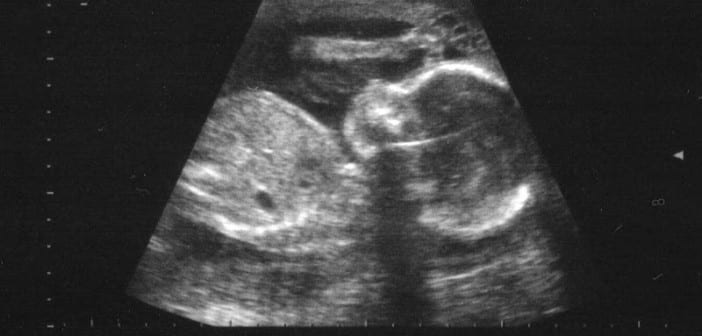The “ultrasound generation” has grown up with an unprecedented conviction that Life inside the womb is real, unique, and undeniably human. Ultrasound technology was a game-changer for the abortion debate. Former abortionists, for example, abandoned the gruesome practice in droves when ultrasound technology was introduced into their abortion businesses and they became, perhaps for the first time, painfully cognizant of the barbarity of the act they inflicted on innumerable children.
Dr. Bernard Nathanson, for example, narrated The Silent Scream – a powerful video documenting, via ultrasound, a preborn child’s futile fight to remain alive during an abortion. The “ultrasound generation” – that is, those who grew up with sonograms as a normal element of prenatal care – is privy to the fascinating process of fetal development and the unspeakable details of dismemberment abortion alike.
Abortion advocates, as a result of this universal presence of ultrasound technology, are forced to contend with the inconveniently ubiquitous knowledge of the reality of abortion. Gone are the days when preborn Life can be dismissed as an inconsequential “blob of tissue.” In their quest to remain relevant, some abortion crusaders have adopted bizarre tactics. Indeed, Lena Dunham’s website, LennyLetters.com, explored their conundrum in a piece entitled, Is This the Ultrasound Generation?, in which the author cites The National Review explaining this very phenomenon:
Slugh wrote that as science and medicine advance, pro-choice advocates would have to face a new set of facts: “A mother looking at an ultrasound of her ten- or twelve-week-old child will know that this is no mere clump of cells, bit of tissue, or tumor.” Instead, finer-tuned technology and clearer ultrasounds would force people to reevaluate “the entire abortion debate.”
The article, by Elle writer Mattie Kahn, poses the fact that the social media generation is frequently exposed to ultrasound images, usually posted as pregnancy announcements beckoning for ‘likes,’ questioning whether the popularity of images positively correlates with Pro-Life sentiment, as logic would suggest.
More importantly, Kahn asks whether seeing her unborn child via ultrasound (i.e., per the Texas Sonogram Law) impacts a pregnant woman’s decision to undergo an abortion. After exploring the history of ultrasound technology and how ultrasounds have affected the abortion debate, Kahn somewhat bizarrely posits that the answer is nuanced in that reactions are relative to the viewer, saying, “an ultrasound is not incontrovertible truth.”
Kahn concludes:
The circumstances that drive a woman to seek an abortion dictate how she sees it, scrutinizes it, makes sense of it. That is, we find a thumbs-up when we search for one. “There is not an automatic way that a picture is going to make all women feel,” Kimport says.
So, is this the ultrasound generation? That really depends on how you look at it.
The article, in this nonsensical conclusion, seems to be countering a position which no one holds; namely, that ultrasounds in and of themselves will create a bond between mother and child so strong that abortion coercion and marketing are powerless to penetrate. The problem for the Pro-Life movement is not that ultrasounds are ineffective. Indeed, we advocate for pre-abortion ultrasounds as a crucial element of informed consent, and as such they are powerful. A woman deserves to know, to whatever degree possible, who her child is before she proceeds with a decision to end his or her Life.
What Kahn misses is that the “ultrasound generation” is a tidy catchphrase for a generation that is more Pro-Life than any since Roe v. Wade—and not just because of ultrasound technology. Science and technology are playing a crucial role in shifting the culture in favor of Life. But we cannot discount the viable alternatives to abortion that the Pro-Life movement works so hard to promote and provide. In tandem with the explosive popularity and availability of the ultrasound as a “window to the womb,” life-affirming options and maternal care networks diminish desperation and, by extension, demand for abortion.

